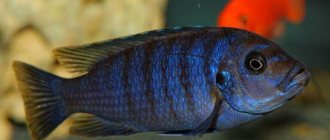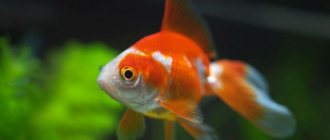How to tame a betta fish?
Teach the cockerel
follow the finger.
Run your finger across the aquarium glass. If the fish
goes for your finger, quickly reward it with a treat.
If the fish
does not notice your finger, move it more actively until it turns its attention to it. Try moving your finger in different directions.
Interesting materials:
Where are the speakers on the MacBook? Where is the pig's soft fat? Where do you study graphic design? Where did Einstein study? Where did Sergei Bezrukov study? Where did Socrates study? Where to learn French? Where to study for free online? Where to study to become an energy engineer? Where to study to become a cosmetologist and esthetician?
Lifespan
The betta fish is a famous aquarium inhabitant that is loved by many people due to its temperament and bright disposition. Its average lifespan in an aquarium is 3–4 years with proper maintenance and nutrition. Some pets can live longer, it depends on the conditions created by the owner.
Reference! If you have betta fish in your aquarium, you should treat their maintenance responsibly, as they need the attention and care of the owner.
How to determine how old a fish is?
Sellers in pet stores cannot always tell how old these types of fish are. Determining age on your own is problematic, but using the tips below, you can give an approximate estimate:
- Determine age by size. The closer the fish is to its optimal size, the older it is. For example, if you buy a rooster 4 cm long, then it is still a young individual.
- Determine age by external signs. Adult representatives have large fins.
- Determine age by color. With age, the color of the fish fades, so older representatives are very different from their younger relatives.
How long can a betta fish live in an aquarium without oxygen?
The betta fish absorbs atmospheric air, floats to the surface from time to time, swallows a bubble of air, from which it extracts oxygen. Such representatives are not demanding in terms of care, but cleanliness must be maintained. Three liters of water will be enough for one fish.
Reference! They are often purchased as a single aquarium pet. But algae, grottoes and good lighting in the aquarium will make their life more joyful.
Water changes should be carried out as in the case of other types of fish:
- at least once every seven days;
- If the aquarium has a volume of up to five liters, then fresh water should be added a couple of times a week.
Adverse factors that shorten life
Many factors negatively affect life expectancy:
- Small aquarium volume . Individuals of this species need to constantly move; there is no need to put them in tight containers that limit their activity.
- Lack of plants in the aquarium . Fish need oxygen, which comes from algae.
- Rare aquarium cleaning . The water in it should be changed periodically, food residues and rotting plants should be removed.
- Lack of conditions for spawning . Cockerels cannot be called exemplary parents, but the inability to reproduce negatively affects their health and reduces life expectancy.
- Diseases . The most common ailments that can shorten life include dropsy and fin rot.
Best neighbors
- Several females can be placed next to peaceful fish; it is only necessary that the neighbors are not fans of plucking lush fins. Thus, individual barbs and characins can leave crowntails plucked and in a state of deep stress.
- Neighborhood with large and active fish is also undesirable, since the cockerels will be in the shelter almost all the time. The best option is a small species aquarium. It is not worth placing several males there - they, as noted above, will often start fights (possibly with a fatal outcome). But cockerels have a fairly peaceful attitude towards other species (viviparous, small characins).
Remember the important rule: one aquarium - one male.
Peaceful fish, small and not aggressive, are better suited as neighbors:
barbs
corridors
tetras
battles
zebrafish
Description
The wild form of the cockerel does not shine with beauty - greenish or brown, with an elongated body and short fins.
But now, this is a collectible and the color, as well as the shape of the fins, has such a variety that it is simply impossible to describe it.
It received the name fighting fish because the males engage in fierce fights with each other, which often end in the death of one of the opponents. The wild form is still used in Thailand for fighting, although not leading to the complete destruction of one of the fish.
Despite the fact that fish are fierce fighters, they have a peculiar behavior in a fight. If one of the males comes up for air during a fight, the second one will not touch him, but will patiently wait until he returns.
Also, if two males are fighting, the third does not interfere with them, but waits in the wings.
But the bettas that you find on sale are far from being the same fighting fish as their relatives. No, their character has not changed, they will also fight.
The very concept of this fish has changed, because today's breeds should bring beauty, they have gorgeous fins, so long that they are damaged by the slightest problem, not to mention a fight.
They are kept for their beauty, gorgeous colors and equally gorgeous fins, and not for their fighting qualities.
The fish grows 6-7 cm in length. Life expectancy is short, up to three years, if kept in good conditions.
Feeding
Betta fish are not picky when it comes to feeding. When hungry, fish suck on plants and soil in search of remaining food. The standard food for Siamese bettas is flakes and small pellets. Cockerels also love to eat live food: tubifex, raspberries, bloodworms. The food can also be used frozen; betta fish will not disdain it and will happily grab the treat. It’s not for nothing that cockerels are called fighting fish; they love to hunt for insects on the surface of the water and fight for food with other fish.
Cockerels enjoy eating live food.
It is very important to prevent overeating. Bettas should be fed in very small quantities, but two to three times a day. To avoid possible obesity, periodically fast them throughout the day. After a fasting day, start feeding the aquarium inhabitant in very small quantities, gradually increasing the dose of food.
Difficulty in content
A fish that is good for beginners. It can be kept in very small aquariums, and in water with different chemical characteristics.
Unpretentious eaters, they will eat almost any available food.
As a rule, they are sold as fish suitable for a community aquarium, but remember that males fight strongly with each other, beat females, and in general can be aggressive during spawning.
But it can be kept alone, in a very small aquarium, and it will tolerate it just fine.
With the right neighbors, they are quite friendly. But during spawning the male is extremely aggressive and will attack any fish.
Especially fish that look like him (even his own female) or are brightly colored. Because of this, they usually keep one per aquarium, or select fish for it that it cannot offend.
A male can be kept with a female, provided the aquarium is large enough and the female has somewhere to hide.
Diseases of lively fish
Fin rot
Characterized by the appearance of a gray coating on the scales, untidiness of the fins, and a general sickly appearance. In the last stage of the disease, it cannot be treated, and soon the fish dies .
Ichthyophthiriasis (semolina)
The second name of the disease is semolina. The disease received this name because of the appearance of the sick fish; its body seems to be sprinkled with grains of semolina. Aquarium predators seem to itch against the soil, stones and decorations. Rapid breathing is typical.
Dropsy
The belly of the fish becomes swollen and red, possibly with ulcers and traces of blood. Color is almost completely lost, and there is a significant decrease in appetite.
Origin story
Cockfighting in Thailand.
The birthplace of betta fish is South Asia. The fish loves warmth and stagnant water; they live in fresh water bodies of Malaysia and Thailand, as well as in Vietnam. Betta fish have gained popularity in past centuries. We first noticed an unusual fish in Thailand. Local residents discovered the agility of male fish towards each other and began to breed them to earn money. They arranged fights between aquarium fish and roosters, on which they bet real money. Soon the fish were exported to Germany and France.
Diseases
Crowntails are quite sickly fish. The cause of most of the diseases is incorrect content, which provokes a weakening of the immune system. First of all, the long fins of bettas can be injured.
Under normal conditions, such injuries heal quickly, but if the immune system is weakened, a fungus can develop in the wound (easily treated with methylene blue preparations, but additional care must be taken to improve the living conditions).
If the water contains a high content of nitrogen metabolism products, the fins may be destroyed (in this case, the development of fungus is also possible; the treatment is the same).
Fin rot is another cause of fin destruction. The lesions have a white border, the skin is pale, and the eyes are cloudy. Rot is a bacterial disease, but is provoked by opportunistic microflora (manifested due to the same weakened immune system). Antibacterial drugs are used for treatment, and the quality of maintenance should also be improved.
Freshly purchased fish are often affected by diseases caused by protozoa, such as oodiniumosis (a golden coating resembling dust appears on the body) and ichthyophthyriosis (parasitic ciliates form a rash on the integument that resembles semolina). Such diseases are treated with drugs based on copper and malachite green.
Mycobacteriosis is a very dangerous disease that cannot be cured. The infection, caused by tuberculosis-like bacteria, develops very slowly and is accompanied by the following symptoms:
- emaciation;
- dropsy;
- ruffled scales;
- goggle-eyed.
The disease is contagious and incurable, but since it progresses slowly, healthy fish with good immunity have every chance of coping with it (it may not manifest itself).











